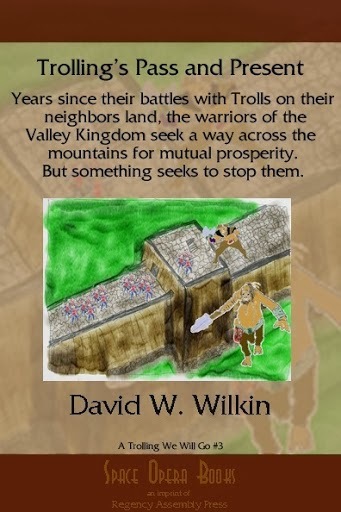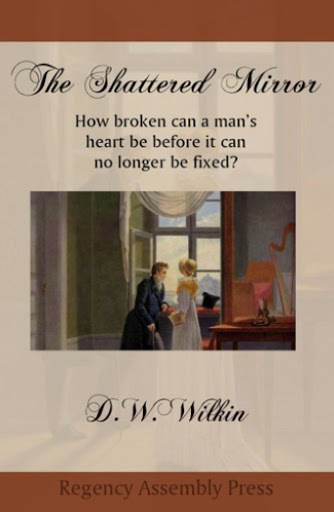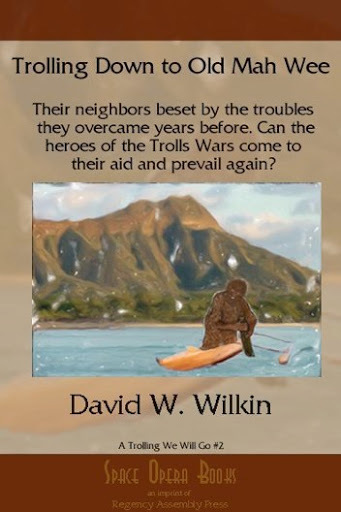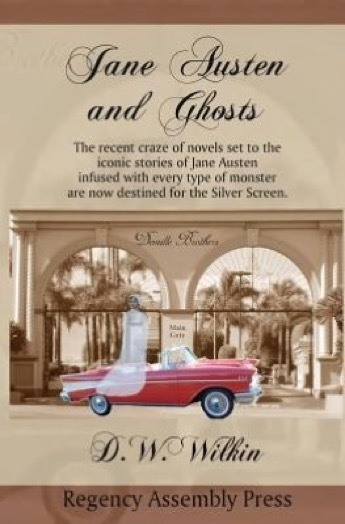D.W. Wilkin's Blog, page 3
January 10, 2017
Regency Personalities Series-Frank Sayers
Regency Personalities Series
In my attempts to provide us with the details of the Regency (I include those who were born before 1811 and who died after 1795), today I continue with one of the many period notables.
Frank Sayers
3 March 1763–16 August 1817
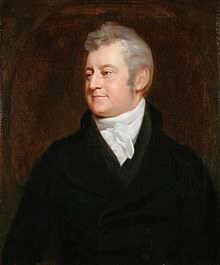
Frank Sayers
Frank Sayers was born in London, being baptised at St Margaret Pattens on 3 April, he was son of Francis Sayers, an insurance broker, by his wife Anne, daughter of John Morris of Great Yarmouth. His father died within a year, and he went with his mother to her father’s house in Friar’s Lane, Yarmouth. At the age of ten he was sent to a boarding-school at North Walsham, where Horatio Nelson was his schoolfellow. A year later he was transferred to a school at Palgrave, Suffolk, a dissenting academy kept by Rochemont Barbauld and Anna Barbauld. There he for remained three years, and met his lifelong friend William Taylor.
In October 1778 his mother’s father died, leaving him a small estate, and he went to learn farming at Oulton. Subsequently he attended John Hunter’s surgery lectures in London, where he saw much of his cousin James Sayers, the caricaturist. For two years from the autumn of 1786 he pursued medical and scientific study at Edinburgh. In poor health, he visited the Lake District in June 1788, and later in the year he went abroad. After graduating M.D. from the University of Harderwyk, he returned to Norwich at the end of 1789, giving up medicine and starting to write.
In 1792, on his mother’s death, Sayers moved to the Close at Norwich, and joined Norwich literary society. Among his friends and guests at various times were Robert Southey, Sir James Mackintosh, Thomas Fanshawe Middleton, and Thomas Amyot. The death of an aunt in 1799 increased his fortune.
He died at Norwich on 16 August 1817. A mural monument was erected to his memory in Norwich Cathedral by his heir, James Sayers. Sayers left benefactions to local institutions, and bequeathed his library to the dean and chapter. His portrait, by John Opie(1800), hung in William Taylor’s library, and passed to Amyot.
From Thomas Gray’s versions of the Runic poems and Thomas Percy’s Northern Antiquities, Sayers derived his Dramatic Sketches of Northern Mythology, which he issued in 1790. The volume consisted of three tragedies, Moina, Starno, and The Descent of Frea; Jann Ewald’s Danish tragedy The Death of Balder, on which the last piece is based, was subsequently translated by George Borrow. In 1792 a reissue of the volume included an Ode to Aurora, and a monodrama, Pandora. A third edition is dated 1803, and the last in 1807. Two German translations appeared, one in blank verse by Friedrich David Gräter, with notes, and another in rhyme by Valerius Wilhelm Neubeck (1793). In 1793 he published Disquisitions, Metaphysical and Literary. He followed David Hartley and Joseph Priestley in his metaphysical essays. In 1803 he published Nugæ Poeticæ, mainly versifications of Jack the Giant-Killer and Guy of Warwick.
Sayers then devoted himself to archæology, philology, and history. In 1805 he published Miscellanies, Antiquarian and Historical. In adissertation he maintained that Hebrew was originally the east, and not the west, Aramaic dialect. Other papers dealt with English architecture, English poetry, Saxon literature, and early English history. In 1808 appeared Disquisitions, another collection of his prose works, dedicated to Thomas Fanshaw Middleton. He was also a frequent contributor to the Quarterly Review.
Walter Scott, writing on 20 June 1807 to acknowledge a copy of his collected poems, said he had long been an admirer of his ‘runic rhymes.’ In July 1801 Southey expressed to Taylor his indebtedness to Sayers for the metre of Madoc. In 1823 William Taylor published a collective edition of Sayers’s works, with Opie’s portrait engraved by William Camden Edwards as frontispiece, and an engraving of Sayers’s house in the Close. Southey favourably reviewed the work in the Quarterly Review for January 1827.


An Unofficial Guide to how to win the Scenarios of Wild the 2nd Expansion for Rollercoaster Tycoon 3
An Unofficial Guide to how to win the Scenarios of Wild
I have been a fan of this series of computer games since early in its release of the very first game. That game was done by one programmer, Chris Sawyer, and it was the first I recall of an internet hit. Websites were put up in dedication to this game where people showed off their creations, based on real amusement parks. These sites were funded by individuals, an expense that was not necessarily as cheap then as it is now. Nor as easy to program then as it might be to build a web page now.
Prima Books released game guides for each iteration of the game, Rollercoaster Tycoon 1, Rollercoaster Tycoon 2 and Rollercoaster Tycoon 3 (RCT3) but not for the expansion sets. And unlike the first two works, the third guide was riddle with incorrect solutions. As I played the game that frustrated me. And I took to the forums that Atari, the game publisher hosted to see if I could find a way to solve those scenarios that the Prima Guide had written up in error. Not finding any good advice, I created my own for the scenarios that the “Official” Guide had gotten wrong.
Solutions that if you followed my advice you would win the scenario and move on. But if you followed the “Official” version you would fail and not be able to complete the game. My style and format being different than the folks at Prima, I continued for all the Scenarios that they had gotten right as well, though my solutions cut to the chase and got you to the winner’s circle more quickly, more directly.
My contributions to the “Official” Forum, got me a place as a playtester for both expansions to the game, Soaked and Wild. And for each of these games, I wrote the guides during the play testing phase so all the play testers could solve the scenarios, and then once again after the official release to make changes in the formula in case our aiding to perfect the game had changed matters. For this, Atari and Frontier (the actual programmers of the game) placed me within the game itself.
And for the longest time, these have been free at the “Official” Forums, as well as my own website dedicated to the game. But a short time ago, I noticed that Atari, after one of its bankruptcies had deleted their forums. So now I am releasing the Guide for one and all. I have added new material and it is near 100 pages, just for the first of the three games. It is available for the Kindle at present for $2.99.
(Click on the picture to purchase)
Not only are all 12 Scenarios covered, but there are sections covering every Cheat Code, Custom Scenery, the famous Small Park Competition, the Advanced Fireworks Editor, the Flying Camera Route Editor which are all the techniques every amusement park designer needs to make a fantastic park in Rollercoaster Tycoon 3.
Scenarios for WILD!
1) Scrub Gardens
2) Ostrich Farms Plains
3) Egyptian Sand Dance
4) A Rollercoaster Odyssey
5) Zoo Rescue
6) Mine Mountain
7) Insect World
8) Rocky Coasters
9) Lost Land of the Dinosaurs
10) Tiger Forest
11) Raiders of the Lost Coaster
12) Saxon Farms


January 9, 2017
Regency Personalities Series-George Burnett
Regency Personalities Series
In my attempts to provide us with the details of the Regency (I include those who were born before 1811 and who died after 1795), today I continue with one of the many period notables.
George Burnett
1776–1811
George Burnett was the son of a farmer at Huntspill in Somerset, where he was born about 1776. After an introduction to classical literature by a clergyman in the neighbourhood, he was sent to Balliol College, Oxford, with a view to his taking orders in Church of England. After two or three years’ residence he became disillusioned with college life, and took part in the scheme of pantisocracy with Samuel Taylor Coleridge and Robert Southey.
After a period supported by his father, Burnett obtained admission as a student at Manchester New College. He was appointed pastor of a congregation at Great Yarmouth, but did not remain there long. He subsequently became, for a short time, a student of medicine in the University of Edinburgh. He was at one time appointed domestic tutor to two sons of Charles Stanhope, 3rd Earl Stanhope, but both his pupils very shortly left their father’s house. Burnett then became an assistant surgeon in a militia regiment.
He soon went to Poland with the family of Count Zamoyski, as English tutor, but in less than a year returned to England, without any employment. He left Huntspill, where he had been writing, and his relatives received no communication from him. From November 1809 till his death, which took place in the Marylebone Infirmary in February 1811, he relied on friends.
He contributed to the Monthly Magazine a series of letters which were reprinted under the title of ‘View of the Present State of Poland,’ Lond. 1807. He next published ‘Specimens of English Prose Writers, from the earliest times to the close of the seventeenth century; with sketches biographical and literary; including an account of books, as well as of their authors, with occasional criticisms,’ 3 vols. Lond. 1807; a compilation forming a companion to George Ellis’s ‘Specimens of the Early English Poets.’ He also wrote the introduction to the ‘Universal History,’ published under the name of Dr. William Fordyce Mavor. His last production, consisting of a selection from John Milton’s prose works, with new translations and an introduction (2 vols. Lond. 1809,), was compiled at Huntspill in 1808–9, and dedicated to Lord Erskine.


Fantasy from Space Opera Books, Trolling’s Pass and Present
Trolling’s Pass and Present
Not only do I write Regency and Romance, but I also have delved into Fantasy. The Trolling series, (the first three are in print) is the story of a man, Humphrey.
We meet him as he has left youth and become a man with a man’s responsibilities. We follow him in a series of stories that encompass the stages of life.
We see him when he starts his family, when he has older sons and the father son dynamic is tested. We see him when his children begin to marry and have children, and at the end of his life when those he has loved, and those who were his friends proceed him over the threshold into death.
All this while he serves a kingdom troubled by monsters. Troubles that he and his friends will learn to deal with and rectify.
It is now available in a variety of formats. For $2.99 you can get this fantasy adventure.
Barnes and Noble for your Nook
Years since their battles with the Trolls, even on foreign soil, the warriors of the Valley Kingdom of Torahn need something to keep their edge honed.
The economy too is beginning to fray a little without the great wars to support. The Leaders hit upon the idea of searching for a path to reach the east side of the continent.
The Elves swear that at one time their writings tell of such, the Dwarves swear such a pass across Teantellen is legendary. Teantellen though is filled with races man has never gotten along with well. Goblins, Dark Elves, Trolls, Giants and Dragons.
It has been years since the mountain tops exploded, and perhaps that has changed things enough that a way can be found to link the western lands with the eastern lands and increase trade, and prosperity for all. Even should they fail in their quest, as the history of man has shown to this point in time, the attempt will do much to spur the economy.
Tens of thousands of gold will be spent by the Council of Twenty-One to pay for such an expedition. Gold that those who are not so scrupulous might choose to pocket as they tried in the Troll Wars.
With such shenanigans taking place again, are the hopes of the previous generation, the leaders from the Troll Wars now in retirement, ready to be achieved? Is it time for Torahn, called the Valley Kingdom, but the only Kingdom without a King, to have a King once more?
Feedback
If you have any commentary, thoughts, ideas about the book (especially if you buy it, read it and like it
January 8, 2017
Regency Personalities Series-Sir Everard Home 1st Baronet
Regency Personalities Series
In my attempts to provide us with the details of the Regency (I include those who were born before 1811 and who died after 1795), today I continue with one of the many period notables.
Sir Everard Home 1st Baronet
6 May 1756 – 31 August 1832
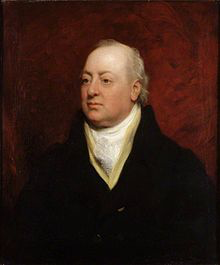
Sir Everard Home
Sir Everard Home 1st Baronet was born in Kingston-upon-Hull and educated at Westminster School. He gained a scholarship to Trinity College, Cambridge, but decided instead to become a pupil of his brother-in-law, John Hunter, at St George’s Hospital. Hunter had married his sister, the poet and socialite Anne Home, in July 1771. He assisted Hunter in many of his anatomical investigations, and in the autumn of 1776 he partly described Hunter’s collection. There is also considerable evidence that Home plagiarized Hunter’s work, sometimes directly, sometimes indirectly; he also systematically destroyed his brother-in-law’s papers in order to hide evidence of this plagiarism.
Having qualified at Surgeons’ Hall in 1778, Home was appointed assistant surgeon at the naval hospital, Plymouth. In 1787 he appointed assistant surgeon, later surgeon, at St George’s Hospital. He became Sergeant Surgeon to the King in 1808 and Surgeon at Chelsea Hospital in 1821. He was made a baronet (of Well Manor in the County of Southampton) in 1813.
He was the first to describe the fossil creature (later ‘Ichthyosaur’) discovered near Lyme Regis by Joseph Anning and Mary Anning in 1812. Following John Hunter, he initially suggested it had affinities with fish. Home also did some of the earliest studies on the anatomy of platypus and noted that it was not viviparous, theorizing that it was instead ovoviviparous. Home published prolifically on human and animal anatomy.
A species of turtle, Kinixys homeana Bell, 1827, is named in his honor.
He was elected a Fellow of the Royal Society in 1787, gave their Croonian Lecture many times between 1793 and 1829 and received their Copley Medal in 1807. He was elected a Foreign Honorary Member of the American Academy of Arts and Sciences in 1832.
His son, James Everard Home, became an eminent officer in the Royal Navy.


RAP has The Shattered Mirror, A Regency Romance
The Shattered Mirror
For your enjoyment, one of the Regency Romances I published. It is available for sale and now at a reduced price of $3.99, and I hope that you will take the opportunity to order your copy.
Order for yourself or as a gift. It is now available in a variety of formats. For just a few dollars this Regency Romance can be yours for your eReaders or physically in Trade Paperback.
Barnes and Noble for your Nook
and in Trade Paperback
Bridget Halifax-Stokes was giddy with the excitement of her Season in London. Town had beckoned and her Season came on the heels of the end of the war against the tyrant. All the handsome men were returning heroes. What better year to come out?
Her father thought it all nonsense. Her mother believed that it would be the best showing of any of her daughters. More lords now available and the family’s luck that Bridget was just the perfect age.
All is fun and frivolity for Bridget until she literally crashes into Sir Patrick Hampton as he limps along the High Street. A man she knew once well from her childhood, now a stranger with dark and foreboding eyes. Eyes that had seen more than any man’s share of the war.
Feedback
If you have any commentary, thoughts, ideas about the book (especially if you buy it, read it and like it
January 7, 2017
Regency Personalities Series-John Pratt 1st Marquess Camden
Regency Personalities Series
In my attempts to provide us with the details of the Regency (I include those who were born before 1811 and who died after 1795), today I continue with one of the many period notables.
John Jeffreys Pratt 1st Marquess Camden
11 February 1759 – 8 October 1840
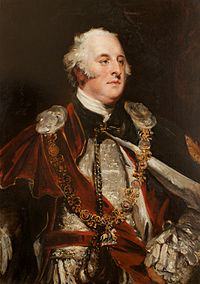
John Jeffreys Pratt
John Jeffreys Pratt 1st Marquess Camden was born at Lincoln’s Inn Fields, London, the only son of Lord Chancellor Charles Pratt, 1st Earl Camden, and Elizabeth, daughter of Nicholas Jeffreys, of The Priory, Brecknockshire. He was baptised on the day Halley’s Comet appeared. He was educated at the University of Cambridge (Trinity College).
In 1780 Camden was elected Member of Parliament for Bath and obtained the position of Teller of the Exchequer the same year, a lucrative office which he kept until his death, although after 1812 he refused to receive the large income arising from it. He served under the Earl of Shelburne as Lord of the Admiralty between 1782 and 1783 and in the same post under William Pitt the Younger between 1783 and 1789, as well as a Lord of the Treasury between 1789 and 1792.
In 1793 he was sworn of the Privy Council. In 1794 he succeeded his father in the earldom, and the following year he was appointed Lord Lieutenant of Ireland by Pitt.
Disliked in Ireland as an opponent of Roman Catholic emancipation and as the exponent of an unpopular policy, Camden’s term of office was one of turbulence, culminating in the rebellion of 1798; his refusal to reprieve the United Irishman William Orr, convicted of treason on the word of one witness of dubious credit, aroused great public indignation.
Immediately after the suppression of the rising Camden resigned. In 1804 he became Secretary of State for War and the Colonies under Pitt, and in 1805 Lord President of the Council, an office he retained until 1806. He was again Lord President from 1807 to 1812, after which date he remained for some time in the cabinet without office. In 1812 he was created Earl of Brecknock and Marquess Camden.
Camden was also Lord Lieutenant of Kent between 1808 and 1840 and Chancellor of Cambridge University between 1834 and 1840. He was made a Knight of the Garter in 1799 and elected a Fellow of the Society of Antiquaries of London in 1802.
Lord Camden married Frances, daughter of William Molesworth, in 1785. She died at Bayham Abbey, Sussex, in July 1829. Lord Camden survived her by eleven years and died at Seale, Surrey, on 8 October 1840, aged 81. He was succeeded by his only son, George.
The family owned and lived in a house located at 22 Arlington Street in St. James’s, a district of the City of Westminster in central London, which is adjoining the Ritz Hotel. In the year of his death, he sold the house to Major Henry Somerset, 7th Duke of Beaufort.


Trolling Down to Old Mah Wee, another Fantasy
Trolling Down to Old Mah Wee
Not only do I write Regency and Romance, but I also have delved into Fantasy.
The Trolling series, (the first three are in print) is the story of a man, Humphrey. We meet him as he has left youth and become a man with a man’s responsibilities. We follow him in a series of stories that encompass the stages of life.
We see him when he starts his family, when he has older sons and the father son dynamic is tested. We see him when his children begin to marry and have children, and at the end of his life when those he has loved, and those who were his friends proceed him over the threshold into death.
All this while he serves a kingdom troubled by monsters. Troubles that he and his friends will learn to deal with and rectify. It is now available in a variety of formats.
For $2.99 you can get this 2nd book in the fantasy adventure series of Humphrey and Gwendolyn.
Barnes and Noble for your Nook
When the neighboring kingdom of Mah Wee begins to experience the same problems that beset Torahn some years before, they urgently request the aid of the experts in containing a new Troll infestation. But eradicating Trolls is not as easy as exterminating a few rats or mice.
Trolls are bigger than men, they are stronger than men, and then are meaner than men. Humphrey Cutter and his band of mismatched warriors must once again rise to the occasion, but can they without the aid of expertise of Gwendolyn and her particular skills?
Mah Wee, an ancient kingdom, with a monarch more steeped in the rights of being a king rather than the obligations and duties that a king should be. Here Humphrey and his crew finds that they have more than Trolls to overcome if they are to save Mah Wee from the same or nearly similar problems that they faced before in Torahn.
But, as Humphrey knows, nothing can truly be accomplished if the lovely Gwendolyn is not able to lend her aid as well.
Feedback
If you have any commentary, thoughts, ideas about the book (especially if you buy it, read it and like it
January 6, 2017
Regency Personalities Series-Oriental Club of London
In my attempts to provide us with the details of the Regency (I include those who were born before 1811 and who died after 1795), today I continue with one of the many period notables.
Oriental Club of London
April 1824 –
The Oriental Club of London was founded perhaps a little prior to April of 1824.
The Asiatic Journal and Monthly Miscellany reported in its April, 1824, issue –
“
An Oriental Club has just been established in London, of which the Duke of Wellington is President, and upwards of forty individuals of rank and talent connected with our Eastern empire are appointed a Committee. The following is the Prospectus… The Oriental club will be established at a house in a convenient situation. The utmost economy shall be observed in the whole establishment, and the subscription for its foundation and support shall not exceed fifteen pounds entrance, and six pounds per annum. There will be a commodious reading room… A library will be gradually formed, chiefly of works on oriental subjects. The coffee room of the club will be established on the most economical principles, similar to those of the United Service and Union. There will be occasional house dinners. The qualifications for members of this club are, having been resident or employed in the public service of His Majesty, or the East-India Company, in any part of the East – belonging to the Royal Asiatic Society – being officially connected with our Eastern Governments at home or abroad… The British Empire in the East is now so extensive, and the persons connected with it so numerous, that the establishment of an institution where they may meet on a footing of social intercourse, seems particularly desirable. It is the chief object of the Oriental club to promote that intercourse…
”
James Grant said of the club in The Great Metropolis (1837) –
“
The Oriental Club, corner of Hanover Square, consists of gentlemen who have resided some time in the East. A great majority of its members are persons who are living at home on fortunes they have amassed in India. India and Indian matters form the everlasting topics of their conversation. I have often thought it would be worth the while of some curious person to count the number of times the words Calcutta, Bombay and Madras are pronounced by the members in the course of a day. The admission money to the Oriental Club is twenty pounds, the annual subscription is eight pounds. The number of members is 550. The finances of the Oriental are in a flourishing state, the receipts last year amounted to 5,609l, while the expenditure was only 4,923l, thus leaving a balance in favour of the club of 685l… at this rate they will get more rapidly out of debt than clubs usually do… Nabobs are usually remarkable for the quantity of snuff they take; the account against the club for this article is so small that they must be sparing in the use of it; it only averages 17l. 10s. per annum. Possibly, however, most of the members are in the habit of carrying boxes of their own…
”
To this day the old Smoking Room is adorned with an elaborate ram’s head snuff box complete with snuff rake and spoons, though most members have forgotten its original function.
In its monthly issue for June 1824, The Asiatic Journal reported that “The Oriental Club expect to open their house, No. 16, Lower Grosvenor Street, early in June. The Members, in the mean time, are requested to send their names to the Secretary as above, and to pay their admission fee and first year’s subscription to the bankers, Messrs Martin, Call and Co., Bond Street.”
The club’s first purpose-built club house, in Hanover Square, was constructed in 1827–1828 and designed by Philip Wyatt and his brother Benjamin Dean Wyatt. Edward Walford, in his Old and New London (Volume 4, 1878) wrote of this building
“
At the north-west angle of the square, facing Tenterden Street, is the Oriental Club, founded about the year 1825… The building is constructed after the manner of club-houses in general, having only one tier of windows above the ground-floor. The interior received some fresh embellishment about the year 1850, some of the rooms and ceilings having been decorated in a superior style by Collman, and it contains some fine portraits of Indian and other celebrities, such as Lord Clive, Nott, Pottinger, Sir Eyre Coote, &c. This club is jocosely called by one of the critics of ‘Michael Angelo Titmarsh’ the “horizontal jungle” off Hanover Square.
The club possesses a fine collection of paintings, including many early portraits of Britons in India such as Warren Hastings. The Bar is overlooked by a painting of Tippu Sultan, the Tiger of Mysore (1750–1799). There are portraits of the club’s principal founders, the first Duke of Wellington (by H. W. Pickersgill) and Sir John Malcolm (by Samuel Lane). Other portraits include Lord Cornwallis (1738–1805), also by Samuel Lane, Sir Jamsetjee Jeejebhoy, 1st Baronet (1783–1859), by John Smart, Clive of India (1725–1774) by Nathaniel Dance-Holland, Major-General Stringer Lawrence by Sir Joshua Reynolds, Major General Sir Thomas Munro, 1st Baronet (1761–1827), by Ramsay Richard Reinagle, Edward Stratford, second Earl of Aldborough (died 1801) by Mather Brown, Mehemet Ali, Pasha of Egypt (c. 1769–1849) and General Sir William Nott, both by Thomas Brigstocke.
President of the Club
1824–1852: Arthur Wellesley, 1st Duke of Wellington (Honorary President)
After Wellington’s death in 1852, no further Presidents were appointed.
The first club Committee of 1824 included:
Lord William Bentinck GCB (1774–1839)
Right Hon. Charles Williams Wynn MP (1775–1850)
General Sir Alured Clarke GCB (1744–1832)
General Sir George Nugent, Bt GCB (1757–1849)
Vice-Admiral Sir Richard King, Bt (1774–1834)
Vice-Admiral Sir Pulteney Malcolm KCB (1768–1838)
Major General Sir John Malcolm GCB KLS (1769–1833)
Sir George Staunton, Bt. MP (1781–1859)
Sir Charles Forbes, 1st Baronet MP
Lt General Sir Thomas Hislop Bart GCB
Lt General Sir Miles Nightingall, KCB
Major General Sir Patrick Rose
Sir Robert Farquhar, Bt.
Sir Christopher Cole KCB MP
Major General Malcolm Grant
Major General Haldane, CB
Rear Admiral Lamber
Major General Rumley
Colonel Baron Tuyll
Colonel Alston
Colonel Baillie MP
Alexander Boswell, Esq.


Jane Austen Fans Rejoice, Jane is BACKKKK… Jane Austen and Ghosts
Special Sale Price!
Jane Austen and Ghosts.
Not only do I write Regency and Romance, but this can take a humorous turn. Some years back, I am sure readers of this blog will be aware that some writers began to take great liberty with Jane Austen and her works. Pride and Prejudice being liberally rewritten with the inclusion of zombies.
Then other books appeared with sea monsters, and werewolves and vampires. President Lincoln has even made it to the big screen where he is intent on sending foul creatures to hell. It occurred to me, even before I read any of this literature, that Jane would probably not appreciate what had been done to her classic piece.
That the tales and her life have become visual spectacles that we enjoy she might not like either, but is perhaps resigned to. That zombies, ghosts and vampires are now used to follow her own plot lines would I think, have her turning over in her grave. Jane Austen and Ghosts is my take on that.
It is now available in a variety of formats. For a limited time it has been reduced to $2.99 for your eReaders and $8.99 for paperback you can get this Jane Austen adventure.
Barnes and Noble for your Nook
and in Paperback
In the world of moviemaking, nothing is as golden as rebooting a classic tale that has made fortunes every time before when it has been adapted for the silver screen.
Certainly any work by Jane Austen made into a movie will not only be bankable, but also considered a work of art. That is of course until the current wave of adaptations that unite her classic stories with all the elements of the afterlife is attempted to be created.
That these have found success in the marketplace amongst booklovers may not be quite understood by those who make movies. But that they are a success is understood and a reason to make them into movies.
All that being said, perhaps it would also be fair to say that the very proper Jane, were she present to have anything to say about it, would not be pleased. Of course she has been away from this Earth for nearly 200 hundred years.
But does that mean were she upset enough, she wouldn’t come back?
Feedback
If you have any commentary, thoughts, ideas about the book (especially if you buy it, read it and like it


